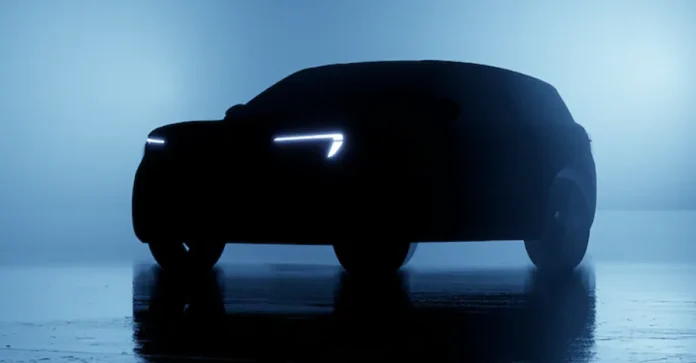Key Points
- Ford is developing a cost-effective electric vehicle platform to compete with Tesla and Chinese automakers, aiming for smaller, more affordable EVs starting under $25,000.
- A small, independent team within Ford initiated the project approximately two years ago, with CEO Jim Farley recently unveiling the initiative during a conference call.
- The flexible platform will underpin various vehicle types, including hybrids, ICE vehicles, and EVs, emphasizing efficiency and affordability.
- Ford plans to generate additional revenue through software integration and subscription-based services, targeting profitability within 12 months of launch.
Ford’s Cost-Effective EV Platform:
Ford is developing a cost-effective electric vehicle platform to compete with Tesla and Chinese automakers, aiming to create smaller, more affordable EVs that are expected to start at under $25,000.
This initiative reflects Ford’s strategic shift towards affordability and efficiency in the EV market, positioning the company to rival key players in the industry with competitively priced electric vehicles.
Approximately two years ago, a small, innovative team within Ford, functioning independently like a startup, commenced work on a novel, cost-effective platform. This clandestine endeavor was recently unveiled by Ford CEO Jim Farley during a conference call discussing the company’s fourth-quarter and full-year earnings for 2023.
“We made a bet in silence two years ago,” Ford CEO Jim Farley revealed.
What is the expected release date for the Ford EV?
The expected release date for the Ford EV is 2025, with the company focusing on developing smaller, more affordable electric vehicles to compete with Tesla and Chinese automakers in the market.
How long has Ford been working on the new low-cost platform for EVs?
Ford has been working on the new low-cost platform for electric vehicles for approximately two years, with a small elite team dedicated to developing this initiative as part of Ford’s strategy to create more affordable EVs to compete with Tesla and Chinese automakers.
Ford’s new flexible platform is expected to underpin several types of vehicles, including hybrids, ICE vehicles, and electric vehicles (EVs)
Key Features Ford’s new EV platform
Ford’s new EV platform prioritizes efficiency and affordability to compete with Tesla and Chinese automakers. With its flexible design, it can support various vehicle types, aiming for versatility and cost-effectiveness to offer more affordable electric vehicles. Designed for software integration, it emphasizes innovation and aligns with market demands for smaller, cheaper EVs. Ford anticipates profitability within 12 months of launch, showcasing its commitment to sustainability and success in the EV market.
Ford plans to generate additional revenue from the new EVs besides their initial sales by focusing on creating a large installed base for software and services related to the vehicles.
This strategy aims to capitalize on the growing trend of software-defined vehicles and offer subscription-based services that can provide ongoing revenue streams for the company. Ford sees affordable Tesla models and Chinese OEMs as its main competitors in the EV market.
The company recognizes the importance of competing with these players to address consumer preferences for more cost-effective electric vehicles and to ensure competitiveness in the evolving EV market landscape.
Ford’s Second-Generation EVs:
Ford’s second-generation EVs are scheduled to start rolling out as part of the company’s revamped electrification strategy. These new models will be based on a low-cost EV platform developed by a small elite team within Ford, separate from the main operations, aiming to produce and sell more affordable EVs than those currently on the market.
Profitability Targets for New EVs:
According to CEO Jim Farley, Ford has set ambitious profitability targets for its new EVs. The company aims for these EVs to achieve a 10% profit margin on an EBIT basis by the end of 2026, with an 8% adjusted EBIT margin specifically for Ford Model e, the company’s EV unit.
Capital Expenditures Allocation to EVs:
Ford plans to allocate a significant portion of its capital expenditures to EVs in 2024. The company is adjusting its capital to focus on smaller EVs and is switching gears to prioritize investments in next-generation electric models, aligning production and inventory with customer demand.
Financial Performance of Ford’s EV Division:
In the previous year, Ford’s EV division faced financial challenges, with the company reporting an operating loss of $4.7 billion on its EV business in 2023. This loss equated to approximately $64,731 for every EV sold by Ford during that year, highlighting the competitive pricing environment and strategic investments in next-generation EVs that impacted the division’s financial performance.
Hybrid Vehicle Sales Strategy:
Ford’s strategy regarding hybrid vehicle sales involves focusing on selling more hybrids in the near term as a bridge to its next-generation electric models. The company forecasts an increase in hybrid vehicle sales this year, aiming to cater to consumer preferences and market demands while transitioning towards a more electrified vehicle lineup.
Profitability Comparison:
In terms of profitability, Ford’s EV division faced challenges compared to its other divisions. While Ford Model e, the EV unit, reported losses of $4.7 billion in the previous year, the company’s internal combustion and fleet businesses generated significant operating profits, with Ford Blue and Ford Pro contributing $6.8 billion and $3.2 billion of adjusted operating income, respectively.
Source: motortrend




